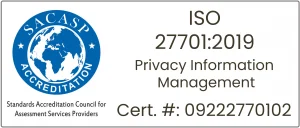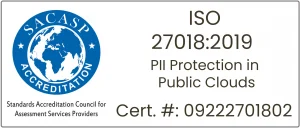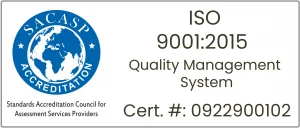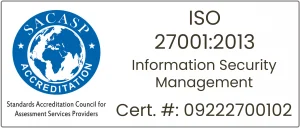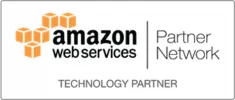How Automation Improves the Cross-Border Payment Process?
Cross-border transactions are critical to global commerce, but they continue to face challenges. The involvement of Multiple jurisdictions and reliance on correspondent banking networks results in inconsistency, costs that are not always transparent, and the reality of settlement to the beneficiary that is unclear which all adds up to the pain for any businesses that desperately need meaningful automation.
The G20 Roadmap for Improving Cross-Border Payments elaborates on current and emerging payment systems and arrangements. However, there is still room for innovation and creativity beyond basic technological advancements. Financial institutions must consider how they can identify and deliver improvements on top of ongoing infrastructure change, both individually and as players in regional ecosystems.
While ISO 20022 will continue to play a leading role in the modernization of cross-border payments, trying to meet the unified communications requirements will only get us so far. To effectively harmonise and leverage the available opportunity, financial institutions must go beyond meeting new standards.
Key challenges experienced in traditional cross border payments systems
1. Data formats that are fragmented or truncated
Payments are made via messages sent across banking institutions to update the sender and recipient’s accounts. These payment messages should include enough information to authenticate the identity of the parties to the payment as well as the credibility of the payment. Data standards and formats differ between jurisdictions, systems, and message networks.
Some formats, for example, only allow Latin characters, while others allow more data than others, requiring names and addresses in other scripts to be translated, resulting in differences in precise spellings. This makes it difficult to implement a streamlined process, resulting in processing delays and an increase in running costs. Our Netremit cross-border payment suite embraces artificial intelligence to handle data fragments more effectively with machine learning techniques that continuously learn from the failures and repair them through harnessed templates to fix them so they can be rightly routed.
2. Processing Complex compliance checks
Since regulatory regimes for sanctions screening and financial crime are inconsistently implemented, the same transaction may need to be checked several times to ensure that the parties are not exposing themselves to illicit finance.
Banks may conduct their checks using various sources, which can result in payments being flagged incorrectly (for example where entities have similar names to those on sanctions or financial crime databases). The number of intermediaries in a chain adds to the complexity, as the original data provided to meet initial checks may not contain elements required for checks under other national regimes. This increases the cost of designing compliance checks, impedes automation, and causes payment delays or rejections. Netremit has inbuilt fraud and enhanced compliance checks that are more effective and matured over years with the frontline experience ported across the process.
3. Limited business hours
Bank account balances can be updated only during the hours when the underlying settlement systems are functional. The operating hours of the underlying settlement system in most countries are typically aligned with normal business hours in that country. Even when extended hours have been implemented, they are frequently limited to specific critical payments. This leads to delays in clearing and settling cross-border payments, especially in corridors with considerable time differences. This causes delays and requires banks to keep enough cash on hand to cover the unknown costs of the eventual foreign exchange rate, which fluctuates during this time, increasing the overall cost of the transaction. This is referred to as trapped liquidity.
4. Legacy technology platforms
A substantial chunk of the technology supporting cross-border payment systems is still being built and working on legacy platforms that were created when paper-based payment processes were first migrated to electronic systems.
Legacy platforms have shortcomings due to their dependency on batch processing, lack of real-time tracking, and limited data processing capacity resulting in settlement delays and trapped cash flow. These constraints affect domestic operations, but they become even more difficult to overcome when different legacy infrastructures need to interact with one another. In this case, interfacing with legacy technology can act as a barrier to the market entry of emerging business models and technologies.
5. Expensive funding
Banks are required to provide funding in advance, often in multiple currencies, or to have access to foreign currency markets to facilitate quick settlement. This creates risks for banks that must be covered by capital, which means that capital cannot be used to support other activities. Uncertainty about when incoming funds will arrive frequently results in overfunding of positions, which raises costs.
6. Lengthy transaction chains
These frictions make it expensive for banks to maintain relationships in all jurisdictions. Therefore, the correspondent banking model is used, but it results in longer transaction chains, which increases cost and delays while also creating additional funding requirements (including covering unpredictable fees deducted along the chain), repeated validation checks, and the potential for data corruption along the way.
Why the cross-border payments should be automated?
As digital invoicing and payments make it easier for B2B funds to cross borders, 64 per cent of B2B firms are moving away from physical invoices to avoid international payments friction. Financial Businesses now are seeking automated technological innovation to better categorise and store data, indicating that meaningful modernisation is now stepping up in the sender and beneficiary space.
Businesses are beginning to assess how their B2B payment processes can accommodate the changing needs of themselves and their clients, as they can no longer bear the time-consuming and costly frictions associated with more traditional B2B payment methods such as wire transfers.
Automation and artificial intelligence (AI) can significantly speed up domestic and cross-border B2B payment processes by eliminating the time and resources needed to finalise attached documents and categorise relevant payment data. Implementing some degree of automation into the cross-border payment practises can assist customers, and businesses with increasing transparency, allowing them to better monitor their transactions.
With consumer-centric peer-to-peer (P2P) payments and associated innovations influencing business payment expectations sending cross-border payments as quickly as domestic ones are critical to building a competitive business. Using an international third-party payment provider could assist businesses in effectively navigating this challenge.
During the pandemic, businesses are frustrated by delayed payments. Payment players are thus investigating ways to modernise the cross-border payment processes associated with cash management, an obstacle that becomes more difficult when dealing with world currencies and an increasingly stringent global regulatory environment era.
Automated Data Reconciliation for faster and easier cross-border payments
Banks and other payment service providers dealing with cross-border payments experience challenges in managing data as they do not have a streamlined process in place which is the primary issue. Customers must provide their identity documents, source of money and other relevant documents to send and receive money. Banks must validate the data and ensure the transactions are done properly. Due to multiple time zones, limited business hours and lack of technology, it is a heavy lift for organisations to share these data for smooth and faster payments. Hence customers experience delays in transactions, payment rejection or even failure in payments.
Institutions must collect, categorise, and validate the huge amount of data which should be shared between various endpoints to enable the transactions. Many organisations use siloed processes as each system is liable for only one step at a time and disconnected from others.
An improved and accurate reconciliation process is critical to enable frictionless real-time cross-border payments despite the transaction volumes. A more efficient process would also avoid putting a lot of pressure on the finance, operations, and treasury teams, which could lead to errors and disillusioned employees.
With our expertise in payment technology including open banking, cross-border payments, and payment clearing solutions, Macro Global is consistently delivering the best customer experience.
NetRemit enables banks to integrate with a vast network such as financial institutions and alternate payment services. Every single payment transaction, as with any financial organisation involving multiple parties, must be reconciled promptly to ensure smooth operations, and compliance, identify fraud risks and maintain the best standard of service for our customers.
Most SMEs perform reconciliation manually through their back-office team. When only a few people are involved, this method remains effective. But how do you handle reconciliation if you have a large number of partners, each with their payment method, transaction format, and data point, as well as millions of transactions?
NetRemit can handle enormous complexity and rising volumes while providing real-time payments. Our V21 version of NetRemit automates the reconciliation process for large transactions with varying payment methods, formats, and data points, faster than ever before. Furthermore, transaction discrepancies can now be detected much earlier and flagged in real-time before being resolved using a simple built-in workflow process.
MG’s NetRemit will take care of all the heavy lifts, and you stay ahead of your peers in the evolving payments space, ensuring that your customers have the best real-time payment experience possible.

